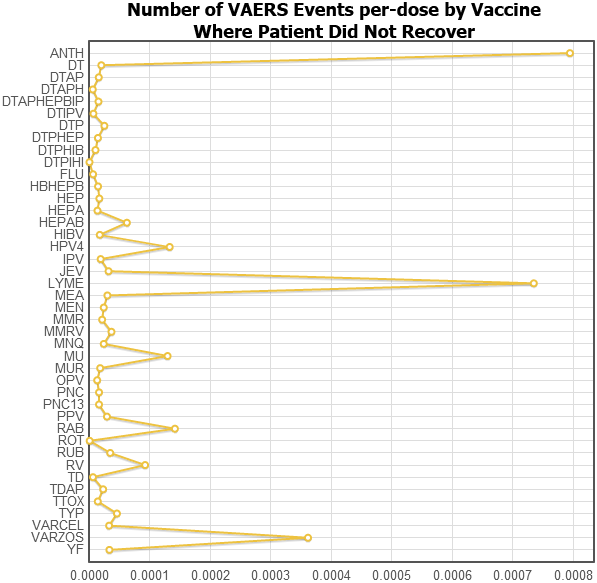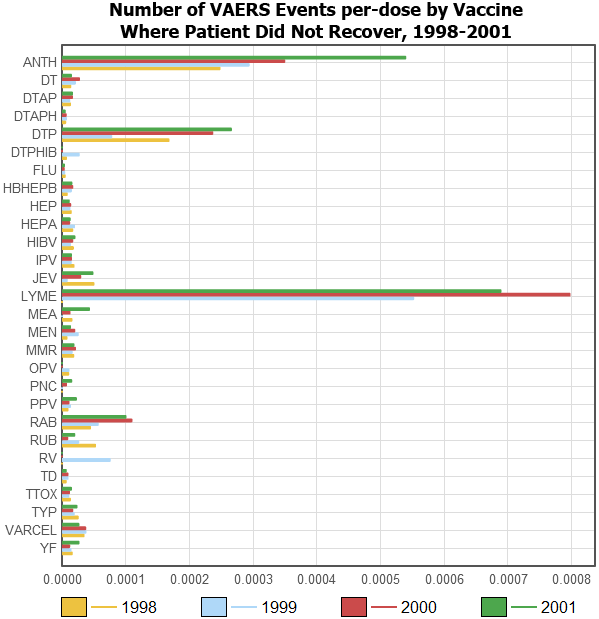
Information Center
Your Health. Your Family. Your Choice.
 |
National Vaccine Information Center Your Health. Your Family. Your Choice. |
The MedAlerts Blog |
The Anthrax vaccine was first developed to protect those handling animal products that could be contaminated with Anthrax, but in the past several decades, it has been promoted as an anti-bioterrorism vaccine. All U.S. military soldiers are required to take a series of Anthrax shots.
Is the vaccine safe?
According to the CDC, "There is no evidence that anthrax vaccine causes long-term health problems."
Let's see what the VAERS database has to say about this.
In order to detect a "long-term health problem", it makes sense to search for VAERS reports in which the patient did not recover. So let's search for VAERS events where "Recovered?" is No (in Section 4 of the search form) and see which vaccines have the highest rate of non-recovery.
Also, let's use the distributed-dosage information to get the VAERS rates. This feature of MedAlerts, described in an earlier blog entry, divides the number of VAERS reports by the number of doses distributed in order to determine the relative rate of adverse events. To get rates, we check Expert mode in the upper-right, and then make a Graph of Vaccines (dose adjusted). This plots the rate of VAERS events per dose of vaccine. The graph looks like this:

How bad are the Anthrax numbers? This graph indicates that 1 out of every 1259 people given the vaccine report a VAERS event describing a reaction from which they did not recover. What could account for this amazingly high rate of reactions? Could it be that the people who get an Anthrax vaccine are overanxious in the first place, and this anxiety leads them to report reactions more frequently? Not likely: most of the people who get the vaccine are in the military. In fact, of the 7500 VAERS events associated with the Anthrax vaccine, 6638 of them (89%) were from vaccines administered by military doctors.
Could this high rate of Anthrax vaccine reactions be caused by underreporting of distributed doses? Definitely. The MedAlerts website has Anthrax vaccine dosage data only for the years 1998-2001, and after that, no further information is available.
It makes sense to repeat the search, but only for the years 1998-2001. This is done by making a Graph of Vaccines (dose-adjusted) and Year of Vaccination (dose-adjusted) and restristing the Vaccination Date (in Section 6) to run from 1998 to 2001. As you can see below, the worst offender is the Lyme vaccine, but Anthrax runs a close second and towers above all others:

Military personnel have no choice about getting the Anthrax vaccine, but if your doctor recommends this vaccine and you are not in the military, or have any say in the matter, you may want to do more research and then discuss the risks with one or more doctors you trust before getting an Anthrax vaccine.
<< 2/2012: The Limits of VAERS 6/2012: The VAERS Wayback Machine >>
Copyright ©
2025 National Vaccine Information Center. All rights reserved.
21525 Ridgetop Circle, Suite 100, Sterling, VA 20166